A feature which used to be found on some of the most interesting small cars from the postwar, such as the Citroën 2CV and the Fiat Nuova 500, a 2-cylinder engine used to be seen as nothing but a cost-cutting measure by most customers, who didn't seem to figure out their practical advantages so well...
The amount of cylinders used to be perceived as a prestige feature, dictating some guidelines to the development of cars such as the original Morris/Austin Mini for which a 4-cyl had to be mounted transversely for space-saving, in order to enable the majority of the floorpan to be devouted for the passengers and luggage, ultimately turning this layout into an industry-standard for small front-wheel drive cars. Most front-engined hatchbacks were following such in the '90s, when Gurgel introduced to the Brazilian market its Supermini resorting to a longitudinal flat-twin engine and rear-wheel drive. In this case, not only fewer cylinders but also their arrangement were relevant for space-saving and to keep a 50-50 weight bias, which would increase towards the rear axle according to the load and improve traction over rough terrain.
Another aspect, most noticeable on flat air-cooled engines, is the cooling efficiency. Taking the example of the VW Beetle with its flat-4 and once again the Citroën 2CV with a flat-twin, the rearmost cylinders of the Beetle would only get cooling air which had previously exchanged heat with the other cylinders, while for a 2CV the cooling flow becomes more homogeneous between the only 2 cylinders. Results may obviously vary among other cylinder layouts, but a twin is still usually better than others when it comes to this aspect.
Considering the success of the Citroën 2CV in Argentina back in the day, which could be perceived as a reason to believe 2-cylinders wouldn't be a taboo there, it's quite surprising to figure out newer models focusing on emerging markets such as the C-Elysée could benefit from such approach, even though very unlikely to be a longitudinally-mounted flat-twin similar to the one which was fitted to the 2CV. It's worth to notice that a 3-cyl 1.2L gasoline-powered engine is available on some countries besides the 1.6L gasoline and Diesel options currently available in Argentina, which may not sum it all but does reinforce the perception that fewer cylinders in a vehicle meant to be somewhat versatile and utilitarian is still acceptable, and maybe such approach is not taken one step further because more sophisticated engines which would increase economics of scale as they're more easily accepted also on vehicles with a supposedly fancier marketing approach.
Considering the widespread perception of engines with fewer cylinders for a given displacement to be less rev-happy, and favoring low-end peak torque over high power throughout a broader RPM band, it's worth to consider not just the impact such matter would cause to overall performance but also the recent trend of downsizing overlapping with some downrevving too. Examples such as the Chevrolet Trax, known in my homeland Brazil as Chevrolet Tracker, show it quite clearly after the 2017 facelift which led to the 1.4L turbocharged engine to replace the previous 1.8L one, both being 4-cyl. Considering the specs for Australia, where both engines are still offered, both are rated at the same 140 horsepower (103 kilowatts), with the naturally-aspirated 1.8L peaking it at 6200 RPM while the 1.4L does the same at 4900 RPM already. Torque rating for the 1.8L is 178Nm (131lb.ft.) at 3800 RPM, while the 1.4L delivers 200Nm (148lb.ft.) between 1850 and 4900 RPM. Sure the turbo is a key factor to the peak torque delivery being flat across a broader revving range, so maybe even a hypothetical 2-cylinder 1.5L based on the ancient Chevrolet 4-cyl "153" engine which used to be a mainstay in Brazil and South Africa could eventually be viable, despite the amount of cylinders remaining seen as a prestige feature in Brazil...
Now looking at Ford, which is having some rough times in Brazil once again, the EcoSport now only has a 4-cyl engine in the Storm 4WD trim, namely the 2.0L Duratec Direct, while other versions are switching from the 4-cyl 1.6L Sigma to the 3-cyl 1.5L Dragon. It's quite hard to compare Brazil and anywhere else, due to the history of automobile industry being totally indissociable from bad political decisions which often led to some unwise strategies among the locally-installed automakers. I'm sure some of the objections raised against the Dragon engine are more biased toward the perception of a 3-cylinder as an impoverishment which is still widespread on the customers' mindset. It's also worth to remind the turbocharged 3-cyl 1.0L EcoBoost which is standard for the US-spec EcoSport is not even available in Brazil, where a fiscal benefit led to this displacement range being more accepted among entry-level car buyers and becoming subjected to some stigma when it comes to other vehicle classes perceived as premium. I know it might sound pointless at first, but this is Brazil, and the SUV trend in a poor country has led even compact models such as the EcoSport to be regarded as somewhat aspirational, and then any step further on downsizing, downrevving or whatever else would become harder to sell despite offering some technical advantage besides a lower manufacturing cost...
Nowadays the model which could be better suited to a selection of 2-cylinder engines in the Ford range is the 3rd-generation Ka, also known in markets such as Mexico and India as Figo. The base engine in Brazil has been the 3-cylinder 1.0L Fox engine since its introduction in 2014, with other options being the 4-cylinder 1.5L Sigma until 2018 when the 3-cylinder 1.5L Dragon replaced it. Even though the model is also available in Europe which is a more developed market, its position as an entry-level econobox could justify an engine which would lead to a lower cost, not to mention the European customer being more open-minded toward fuel savings in this class compared to others who still consider the displacement and amount of cylinders as a matter of prestige. Considering the fewer internal frictions and pumping losses inherent to having fewer cylinders, such approach could eventually become also beneficial regarding the emission regulations in Europe which are getting more and more stringent.
Sometimes a technical approach which had been quite neglected for a while might end up being the best approach to overcome modern challenges, and this happens to apply to 2-cylinder engines. Sure it's not only an objective matter, with more subjective aspects also becoming relevant, but it doesn't justify the absence of such engine layout on most automotive markets nowadays.

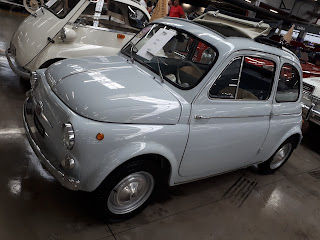
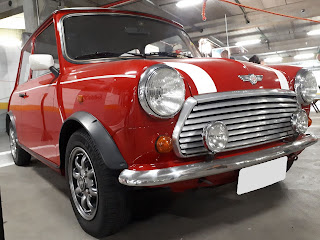



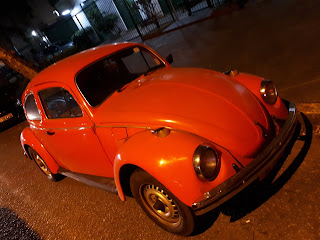


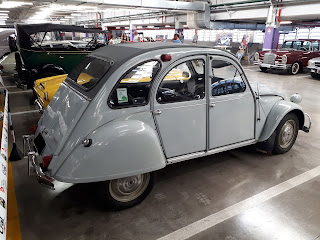





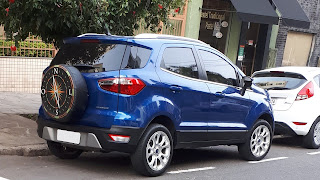


No comments:
Post a Comment
Only comments written in English are published. Not so rigid about the grammar, but some regional slang should be avoided to make it clear and easily understandable.